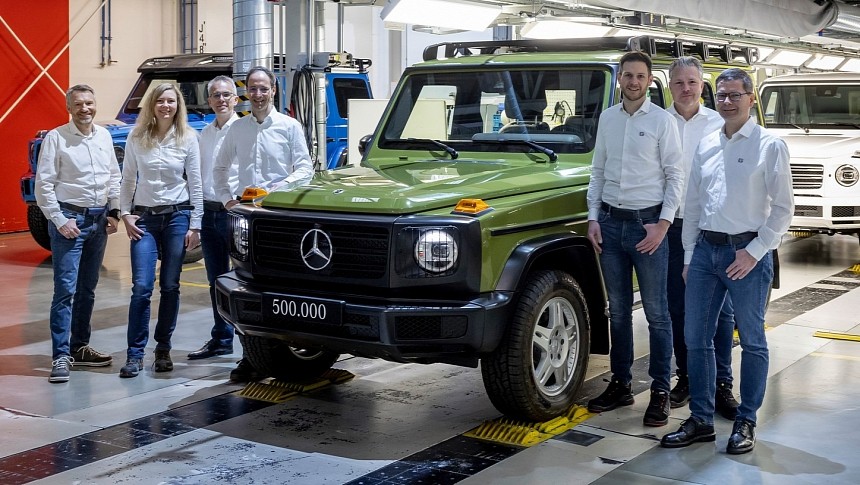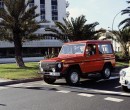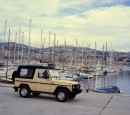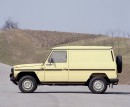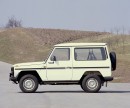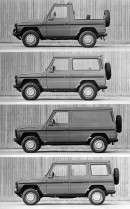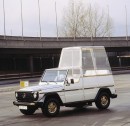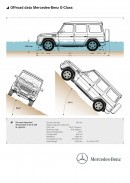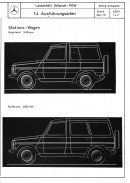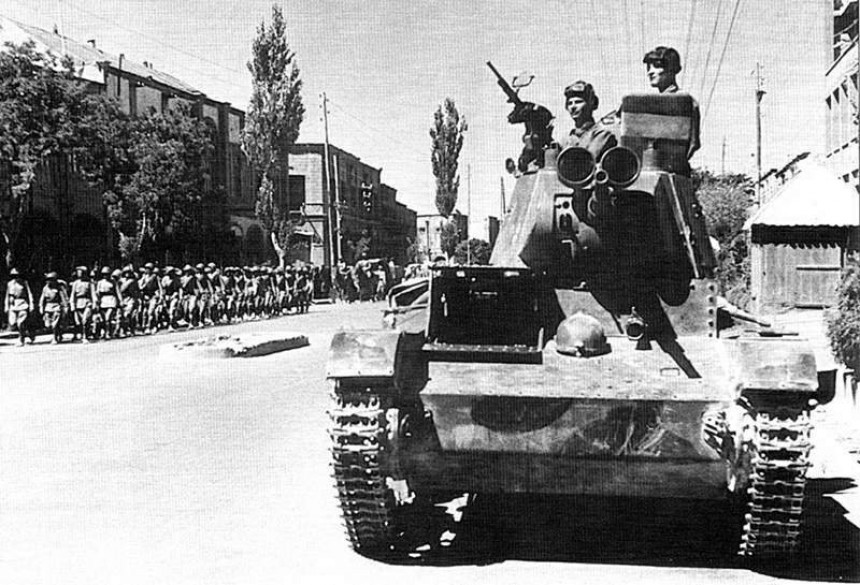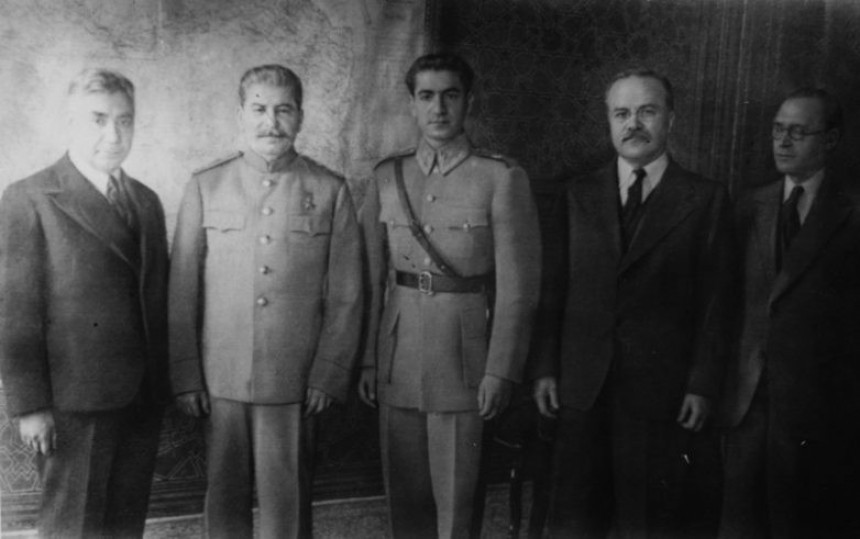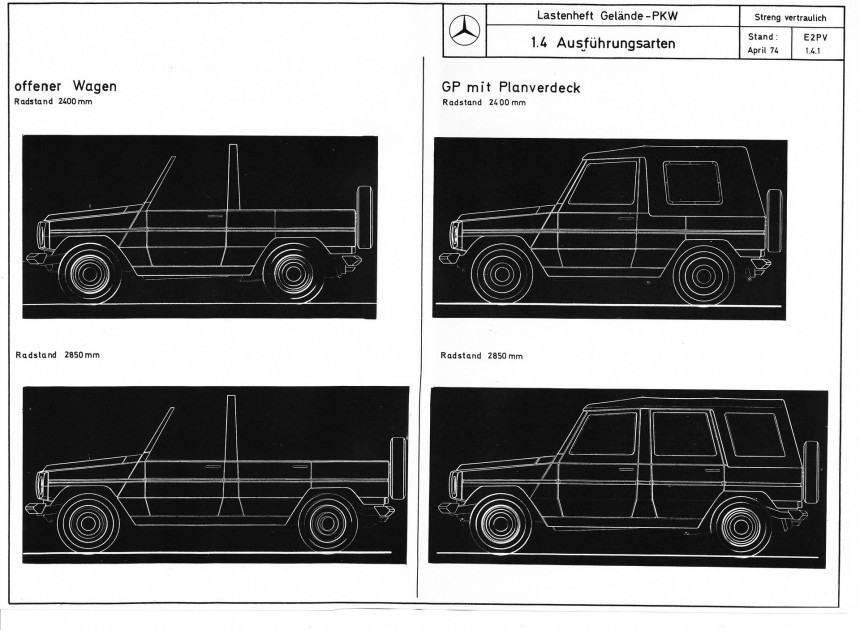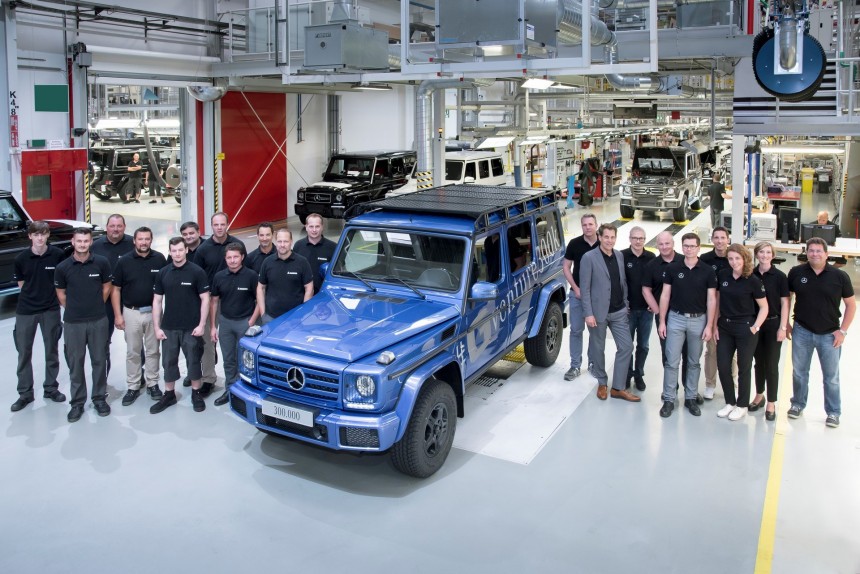The history of one of humanity's greatest inventions – the automobile – is intimately entangled with one of humanity's most atrocious institutions – war. Usually, mechanical contraptions receive their supreme test through the fiery forges of armed conflict. Think of the Jeep Willys, the HMMWV (High Mobility Multipurpose Wheeled Vehicle – or Humvee), or the Mercedes-Benz G-Class. Intrigued? The luxury SUV is perhaps the longest-sprouting military ideation of a vehicle in automotive history.
In the summer of 1941, Germany invades the Soviet Union. One thing led to another, and 82 years later, the Mercedes-Benz G-Class production headcount reached half a million. What's the connection between the two events? The Prince of Persia.
When Nazi Germany ignited Operation Barbarossa on June 22, 1941, it had already been fighting the British Empire on the Western Front of Europe. Automatically, the UK and the USSR became allies against the common aggressor. Naturally, they do what most military superpowers do in times of war: invade another country.
In September 1941, that country happened to be the oil-rich, military-weak Imperial State of Iran. The empire's ruler – the Shah - was quickly and unceremoniously overthrown after a virtually unopposed Anglo-Russian invasion. His successor was his 23-year-old son, Crown Prince Reza Mohammad Pahlavi. He watched in awe as his country's Army fled in the face of advancing enemy troops.
Fast-forward some three decades, and the world geopolitics see a very wealthy and prosperous state of Iran flourishing under the downpour of capitalist petrodollars. However, the King of the country ("shah" means "king") still bears the painful memory of his country's powerlessness from WWII.
Iran was a significant investor in various Western companies by then, including some of West Germany's top 50 industrial conglomerates. The aggressive purchase spree raised concerns within the German federal government, which – backed by Deutsche Bank of Frankfurt – fended off an Iranian intent to buy 25% of Daimler-Benz in 1975.
This didn't discourage the ambitious King, who already had a lucrative deal with the German carmaker in a 20,000-unit order for military trucks. How did he get this idea is not hard to see. Remember the 1941 Anglo-Soviet invasion of Iran? Shah Mohammad Reza swore he would never allow such a humiliation ever to happen again.
He needed a strong military, and vehicles were part of the Army's modernization. He reached out to Mercedes-Benz and struck a deal. Pleased with their offer, the Shah suggested that the car company made a smaller but equally capable 4x4 for his troops. "One that I can take hunting," he allegedly added, and Mercedes agreed.
When a client lands a firm order for 20,000 vehicles, he gets his supplier's undivided attention, so the Germans set to work. One small problem, however – the requested vehicle did not exist in their portfolio.
Luckily, Daimler-Benz had already approached the Austrian Steyr-Daimler-Puch (SDP) automaker to help them with the initial 20,000-truck contract. And SDP had just the right platform for what was to eventually become a legend of automotive: the G-Wagen, today referred to as the Mercedes-Benz G-Class.
The development started in the early '70s, and the final product was launched on February 4, 1979. The date is crucial because the Shah of Iran would be utterly removed from power only seven days later. The ousted Iranian King never got his G-Wagen, but the rest of the world did.
Forty-four years later, Mercedes-Benz rolled off its 500,000th G-Class. This milestone can only entice the model's hard-core fans and speaks volumes about the enduring SUV. The G-Class has moved up in the ranks of the automobile hierarchy and has been virtually unchanged in demeanor since 1975 – refer to the gallery for pictures of a test mule from that year.
It started as a patrol car for soldiers worldwide, became a perfect outdoor adventure companion, and gained a status symbol aura over the decades. It never lost its heart, though – the G-Class is a master off-roader with rugged looks and cutthroat capabilities.
When it first rolled off the assembly line, the square-shaped vehicle was powered by a very dismal (by contemporary standards) 2.4-liter inline-four diesel, capable of a measly 71 hp (72 ps) and 101 lb-ft (137 Nm). For good measure, size it up against the most powerful G-Class of 2023, the Brabus 900 Deep Blue. 888 hp (900 ps), 922-lb-ft (1,250 Nm) from a 4.8-liter twin-turbo V8.
If those aren't enough, then consider the performance numbers. With its four-cylinder diesel, the original G-Wagen would reach 62 mph from a standing start in over half a minute (32 seconds!). Its 2023 grandson, the muscle-bound, gasoline-burning Brabus cataclysm, does it in just 3.7.
They are worlds apart, but the similarities are striking: the boxy shape has endured time, fashion, legislative punishments, and gearheads' tastes. The G-Class is unmistakable from its inception to the present day. Only Porsche can claim a more extended history of using the same design language from generation to generation.
The original Mercedes-Benz SUV took seven years to reach the 50,000-unit milestone in 1986. By 1992, it doubled that number, and the G-Class had already established its name with multiple acts of automotive Mastercraft.
In 1980, it became the new Pope-mobile, assisting John Paul II in his globe-trotting mission. In 1983, it won the Paris-Dakar rally. In '85, the three locking differentials became standard – a feature that permeated the fabric of time and technology and is still present today.
Slowly parting ways with the crude but effective military transporter, the G-Class became classier with each year without compromising its overlanding soul. Engine displacements, cylinder headcount, and outputs grew proportionally, and so did its popularity (and price tag).
Despite its apparent variety, production gradually slowed; the G-Class reached the 200,000-unit mark after another decade since car no. 100,000 had driven off the assembly plant in '92. The next step (300,000) was reached in July 2017.
From then on, the G-Class shifted the build rate into Fast mode. In December 2020, the 400,000th vehicle was born. Two years and four months later, in April 2023, G-Class claims bragging rights with its half-million worldwide carpool.
The milestone automobile was assembled in the Graz factory in Austria, where the model's original production began in 1979. The anniversary car is the spitting image of the first G-Wagen, with its Agave Green Livery, retro styling, and turn signal lamps. The orange hue on the indicators is the exact one from forty-four years ago.
Despite its numerous variants, iterations, derivatives, interpretations, and transformations, the G-Class Merc has always stayed true to its central creed: go anywhere with ease. Over the years, comfort was added to that motto. Still, the mechanical abilities of the somewhat brute-looking SUV have never subsided to its other qualities.
When Nazi Germany ignited Operation Barbarossa on June 22, 1941, it had already been fighting the British Empire on the Western Front of Europe. Automatically, the UK and the USSR became allies against the common aggressor. Naturally, they do what most military superpowers do in times of war: invade another country.
In September 1941, that country happened to be the oil-rich, military-weak Imperial State of Iran. The empire's ruler – the Shah - was quickly and unceremoniously overthrown after a virtually unopposed Anglo-Russian invasion. His successor was his 23-year-old son, Crown Prince Reza Mohammad Pahlavi. He watched in awe as his country's Army fled in the face of advancing enemy troops.
Iran was a significant investor in various Western companies by then, including some of West Germany's top 50 industrial conglomerates. The aggressive purchase spree raised concerns within the German federal government, which – backed by Deutsche Bank of Frankfurt – fended off an Iranian intent to buy 25% of Daimler-Benz in 1975.
This didn't discourage the ambitious King, who already had a lucrative deal with the German carmaker in a 20,000-unit order for military trucks. How did he get this idea is not hard to see. Remember the 1941 Anglo-Soviet invasion of Iran? Shah Mohammad Reza swore he would never allow such a humiliation ever to happen again.
When a client lands a firm order for 20,000 vehicles, he gets his supplier's undivided attention, so the Germans set to work. One small problem, however – the requested vehicle did not exist in their portfolio.
Luckily, Daimler-Benz had already approached the Austrian Steyr-Daimler-Puch (SDP) automaker to help them with the initial 20,000-truck contract. And SDP had just the right platform for what was to eventually become a legend of automotive: the G-Wagen, today referred to as the Mercedes-Benz G-Class.
Forty-four years later, Mercedes-Benz rolled off its 500,000th G-Class. This milestone can only entice the model's hard-core fans and speaks volumes about the enduring SUV. The G-Class has moved up in the ranks of the automobile hierarchy and has been virtually unchanged in demeanor since 1975 – refer to the gallery for pictures of a test mule from that year.
It started as a patrol car for soldiers worldwide, became a perfect outdoor adventure companion, and gained a status symbol aura over the decades. It never lost its heart, though – the G-Class is a master off-roader with rugged looks and cutthroat capabilities.
If those aren't enough, then consider the performance numbers. With its four-cylinder diesel, the original G-Wagen would reach 62 mph from a standing start in over half a minute (32 seconds!). Its 2023 grandson, the muscle-bound, gasoline-burning Brabus cataclysm, does it in just 3.7.
They are worlds apart, but the similarities are striking: the boxy shape has endured time, fashion, legislative punishments, and gearheads' tastes. The G-Class is unmistakable from its inception to the present day. Only Porsche can claim a more extended history of using the same design language from generation to generation.
In 1980, it became the new Pope-mobile, assisting John Paul II in his globe-trotting mission. In 1983, it won the Paris-Dakar rally. In '85, the three locking differentials became standard – a feature that permeated the fabric of time and technology and is still present today.
Slowly parting ways with the crude but effective military transporter, the G-Class became classier with each year without compromising its overlanding soul. Engine displacements, cylinder headcount, and outputs grew proportionally, and so did its popularity (and price tag).
From then on, the G-Class shifted the build rate into Fast mode. In December 2020, the 400,000th vehicle was born. Two years and four months later, in April 2023, G-Class claims bragging rights with its half-million worldwide carpool.
The milestone automobile was assembled in the Graz factory in Austria, where the model's original production began in 1979. The anniversary car is the spitting image of the first G-Wagen, with its Agave Green Livery, retro styling, and turn signal lamps. The orange hue on the indicators is the exact one from forty-four years ago.
Despite its numerous variants, iterations, derivatives, interpretations, and transformations, the G-Class Merc has always stayed true to its central creed: go anywhere with ease. Over the years, comfort was added to that motto. Still, the mechanical abilities of the somewhat brute-looking SUV have never subsided to its other qualities.
